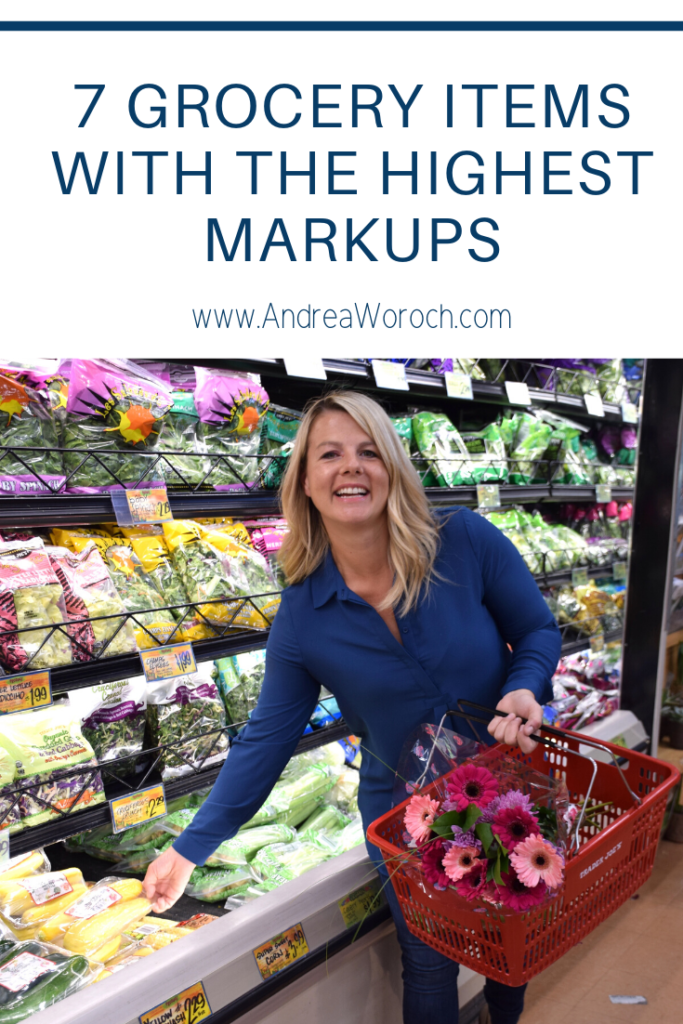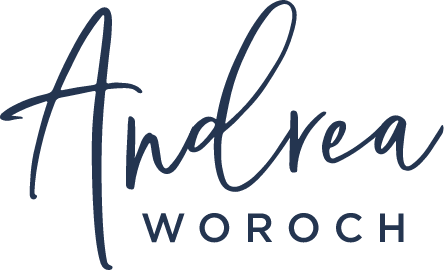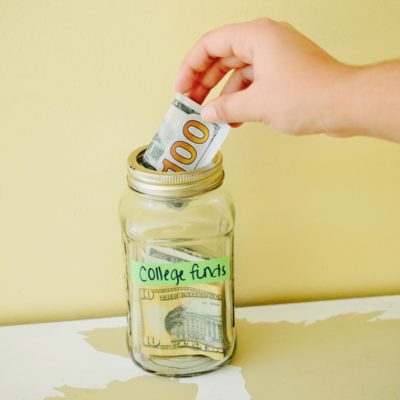Grocery shopping is one of those necessary evils — a chore I dread every week, especially when I have to bring my two littles along. That’s why I try to fit in a food run in between dinner and bedtime while my husband gives my daughters their bath. This means, however, I have to race against the clock to get it done quickly, which often results in me forgetting a few important ingredients and grabbing stuff I don’t really need. Although shopping with a detailed list and well-thought out meal plan is one surefire way to save on grocery shopping and reduce spending, knowing what to buy and what to avoid when it comes to generic versus name-brand has also boosted our budget.
Here’s a look at several grocery items with the highest markups and how you can save money.

Precut Produce: 40% Average Markup
Produce that has been sliced, chopped or diced comes with a convenience markup and is priced an average of 40% more compared to the whole vegetable or fruit. Considering the task of cutting up your own produce takes no more than5 minutes isn’t worth the added cost. Lower your produce purchases even more by selecting only what’s in season for the lowest prices. Better yet, pop by a street vendor for the least expensive fruit and veggies. If finding time to prepare your food after work is the issue, carve out some time over the weekend to chop and store for use during the week.
Frozen produce is another great alternative since you can keep these on hand for a quick stir fry, smooth or omelette and you don’t have to worry about it going bad. You also don’t have to worry about frozen vegetables or fruit being any less nutritious because they are flash frozen at peak ripeness. In fact, one survey says frozen may even be better than fresh!
Pro tip: Opt for bagged produce. Federal law requires each bag of fruit or vegetables contain at least the advertised weight. Because of this, grocers sometimes toss in extra to avoid underweight errors. Weigh the bags to find the heaviest without worrying about an extra cost.
Name-Brand Cereal: 40% Average Markup
Thee American Journal of Agricultural Economics, found that one of the most basic cereals, Kellogg’s Corn Flakes, had the highest average retail markup of 43.5%– ouch! When it comes to cereal, most of the time, you’re paying for design and packaging rather than taste. With that in mind, get in the habit of comparing ingredients between your favorite name-brand cereal with the less expensive generic brand. You will likely notice that the ingredients are nearly identical, with a less appealing box and 30 to 50% lower price tag. If you’re still hesitant and afraid to stray from you or your kid’s favorite morning brand, give the generic a try–it can’t hurt to try it at least one time. Chances are you won’t notice a difference and the savings you gain will lower your overall grocery spend. But, beware when giving the generic version to your little ones as they may scoff at the cereal box if they don’t see their favorite character on the front of it. You can swap the store brand into a name-brand box so they don’t know the difference! Oatmeal is one of the other breakfast foods I always buy generic, too, because I find it tastes just as great as the name-brand version.
If you aren’t willing to give up that name-brand cereal you’ve been eating all these years, save by stocking up when your local grocery runs a sale and look for coupons to stack on top of the discounted price for an even better deal.
Pro tip: Grocery stores often have clearance items that sit in a specific section and you can find great deals on many every day foods. Ask an associate where you can find red-sticked sale items and begin your shopping trip there!
Prepared Meats: Up to 60% Markup
Similarly to markups found on precut produce, any meat, chicken or fish that has been cut up, diced or marinaded will cost more — as much as 60% more in some cases! You can save big bucks by purchasing meat in larger slabs and make your own marinade using lemon, olive oil and your favorite spices.
Pro tip: Look for manager markdowns. Perishable items nearing their expiration date will usually be discounted since it has a short shelf life and this is a great way to save on meat. Just make sure to cook whatever you buy right away or freeze it for a later date. You may also find manager markdowns on other perishable items.
Name-Brand Spices: 100% Average Markup
Name-brand spices have a markup of nearly 100%, but have the same exact taste as generic options. Head to the ethnic aisle to find less expensive herbs and spices which you will find sold in cheaper, plastic bags. Otherwise, head to a natural food store or ethnic market to pick up spices at major savings. For instance, a $3.52 jar of bay leaves at the grocery store will cost you only 12 cents for the same amount at a natural foods store. Drugstores and discount stores also sell spices cheaper than at a grocery store. You may have to bring your own bottles to fill, but the savings make up for this.
Pro tip: Hold on to old glass and plastic spice jars to refill when you purchase new ones in bulk. Just make sure to re-label the container so you know which herb or spice it contains. After all, you don’t want to mix up nutmeg for cinnamon when you’re baking.
Name-Brand Baking Supplies: 30% Markup
Pantry staples like flour, baking soda and sugar are necessary to keep on hand when cooking just about any meal. Although those name-brand baking supplies seem like a small cost, the store brand can help you save around 30%. And, don’t worry about any difference in taste. These items are made with one, simple ingredient and that means they can’t be manufactured any differently from one brand to another, so don’t waste your money. Unless your local grocery store is running a special on a name-brand baking ingredient, stick with the generic version to save.
Pro tip: Look up and down to find cheaper options. Many grocery stores place the most expensive products at average eye level, with lesser cost alternatives such as generics on higher and lower shelves. Beat them at their own game by always comparing the prices of products found above and below those name-brand food items.
Baked Goods: up to 300% Markup
The bakery is one of the most overpriced sections of any grocery store, with markups topping 300 percent. Baking cookies, cupcakes and birthday cakes from scratch is the cheapest way to go, but even boxed cake and brownie mixes are a less expensive alternative to the bakery. Search sales and coupons on your favorite packaged bakery mix and stock your pantry so you always have one available to make a sweet treat for your family or for an upcoming celebration.
Pro tip: You can often find markdowns on one-day old baked goods such as bread, muffins, cookies and other delectable treats at the supermarket–which still taste just as fresh. Ask someone from the bakery section to direct you to these cheap options.
Bottled Water: 4,000% Average Markup
According to the Natural Resources Defense Council, bottled water is not better regulated, better protected or safer than tap. So, is spending on bottled really worth it? Though some bottled water comes from sparkling springs or other pristine waters, 25% comes from municipal supply. Using a refillable water bottle is the cheapest option for water. For those with concerns about the quality of their tap water, get a water-quality or consumer-confidence report from your water company (assuming your water comes from a public source). Otherwise, look into installing a water filter to purify your tap water so you don’t have to waste money on bottled.
If bottled, however, is still the best option for you, buy packages in bulk from warehouse stores and opt for generic to score the cheapest price.
Final note: Although generics and store brands are often cheaper compared to name brand options, don’t assume it’s always going to be that way. You still need to compare prices every time you shop because a product or brand sale may actually make the name brand cheaper. Plus, you can often find coupons for name-brand items more often than for the generic versions. But a quick calculation can help you determine the best and cheapest option, so just make sure you have your smartphone to help you with the math!
Save for the things that matter
Without giving up the things you love
Want your family’s financial future to feel safe and secure? Download my Easy Family Budget Worksheet and take control of your family’s finances in just 10 minutes!



